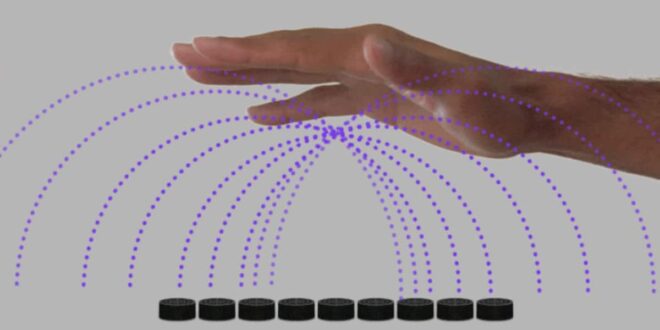Haptics vs. Vibrations: Understanding the Difference
Haptics and vibrations are frequently used interchangeably when discussing smartphones, but it’s important to distinguish between the two. Haptics refers to conveying information through touch, such as the satisfying click when pressing a virtual button or the realistic recoil while gaming. In contrast, vibrations are simply alerts that grab attention, like when a phone buzzes for an incoming call.
The Potential of Haptics Technology
Vibrations are limited to notifying users, but haptics offers a plethora of possibilities beyond phones and controllers. In 2017, Royal Institution demonstrated how haptics can create the illusion of touch without physical contact, solely using forces and vibrations.
Exploring Haptic Technology
Haptic technology enhances interaction with the digital world by simulating the sense of touch through forces, vibrations, and motions. This immersion can be experienced in virtual reality, gaming, and remote control applications. For example, touching a virtual button on a screen might result in a click or buzz, while driving a car in a game can generate resistance or shaking in the virtual steering wheel.
Different Types of Haptic Technologies
Various types of haptic technologies provide different forms of feedback. Some utilize motors that spin or move back and forth, creating vibrations known as eccentric rotating mass vibration (ERMV) motors or linear resonant actuators (LRAs). Others employ thin materials that bend or contract when an electric voltage is applied, called piezo haptic sensors. The choice of haptic technology depends on factors such as the desired effect, cost, and available space.
Applications of Haptic Technologies
Haptic technologies can be utilized in a variety of ways, including:
- Haptic gloves that allow users to feel and manipulate virtual objects with their hands.
- Haptic suits that simulate sensations such as temperature, pressure, and pain on the entire body.
- Haptic displays that project tactile images onto the skin using ultrasound waves.
Introducing Mid-Air Haptics
Mid-air haptics is a relatively new branch of haptic technology that uses ultrasound waves to create touch sensations without physical contact or wearable devices. By employing an array of ultrasound transducers, users can touch and interact with virtual objects as if they were real. Mid-air haptics offers the potential to feel the shape, texture, and motion of virtual objects or experience sensations like gentle breezes on the skin.
Leading Companies in Mid-Air Haptics
Ultraleap, formerly Ultrahaptics, is a pioneer in mid-air haptics. Their technology combines hand tracking with mid-air haptics for natural and intuitive interaction with digital content. Partnerships with various industries and companies, such as DS Automobiles, Ocean Outdoor, and Qualcomm, have resulted in the development of products and platforms like STRATOS, Gemini, and TouchFree. Ultraleap acquired Leap Motion, renowned for hand-tracking technology, in 2019.
Hosiden, a Japanese manufacturer of electronic components and devices, is also working on mid-air haptics. Collaborating with Ultraleap, Hosiden aims to bring touchless interfaces and infotainment systems to future cars.
Enhancing Mixed/Extended Reality with Mid-Air Haptics
While Apple’s Vision Pro headset lacks haptic support, haptics could play a crucial role in creating immersive experiences across virtual, augmented, and mixed realities. The technology can enable users to feel virtual objects, menus, buttons, and feedback in MR/XR environments. Additionally, it has the potential to generate realistic sensations of wind, rain, and other natural phenomena.
Applications of Mid-Air Haptics
Mid-air haptics can be applied in various scenarios, such as:
- Education: Facilitating learning by allowing students to feel and manipulate abstract concepts like molecular structures and sound waves.
- Healthcare: Improving medical procedures’ quality and safety by providing haptic guidance and feedback for surgeons, nurses, and patients.
- Accessibility: Assisting people with visual impairments through spatial and directional cues for navigation, obstacle detection, and object recognition.
Overall, haptic technology and mid-air haptics have the potential to revolutionize interaction with digital content and enhance immersive experiences in various fields.
 Mind Uncharted Explore. Discover. Learn.
Mind Uncharted Explore. Discover. Learn.



